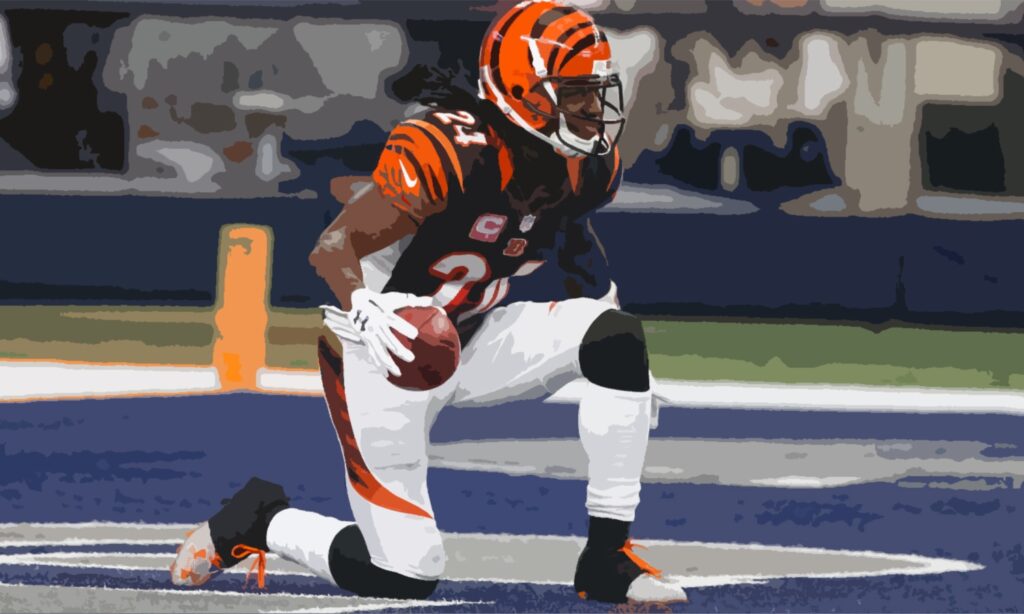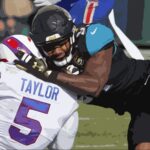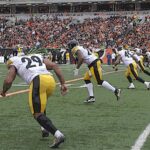After a kickoff or punt, various plays can unfold from the ensuing sequence.
The worst case scenario for the kicking team is that the receiver runs the ball across the field for a touchdown.
While this is one of the most exciting plays to watch in the NFL, it only happens on occasion.
A less likely scenario is for the kicking team to recover the ball for possession.
This would require a successful onside kick or a muffed recovery.
But there are certain plays that happen more often than not. Those include returns (punt/kickoff), fair catches (punt) and touchbacks (punt/kickoff).
A punt or kickoff return is the result of the receiving team catching the ball in an attempt to run with it.
Meanwhile, a fair catch is when the receiver signals by waving their hand above their head to catch a kicked ball without the risk of being tackled.
Once the punt is caught, the play is dead at the spot of recovery.
That leaves us with the touchback.
What is a Touchback in Football?
In the NFL, a touchback occurs when the ball is kicked into the receiving team's end zone and is not returned passed the goal line. As a result, the receiving team gains possession of the ball at their own 25. In 2023, a touchback is also ruled when the kickoff receiver calls for a fair catch inside the 25-yard line.
The NFL deemed the kickoff to be the most dangerous sequence in the game, leading to a high concussion rate.
Based on estimates, the NFL believes the new kickoff rule will reduce kickoff returns from 38% down to 31%, while reducing the concussion rate by 15%.
Touchback on the Punt and Kickoff return explained
For those that are not familiar, kickoffs take place at the beginning of every half or after scoring plays.
Meanwhile, punts typically occur on fourth down when a team is giving up possession of the ball to the opposing team.
One thing is certain, if the balls lands beyond the end zone off of a kick or punt, the result is an automatic touchback.
Touchback on Punts
But the punter usually attempts to kick the ball as high up and short of the goal line.
The reason for a long hang time is so that the offensive special teams can approach the receiver as quickly as possible.
Ideally, they get to the receiver even before the ball is caught.
However, if at any time the ball reaches the end zone as a result of the punt, it’s an automatic touchback.
The ball can either land directly in the end zone or bounce its way in.
Which is why the punter tries to kick the ball short.
That way, if the kicking team touches the ball at the 1-yard line, the receiving team starts their drive from there, rather than the 25-yard line (from a touchback).
But it’s important to note that the ball is deemed dead on the spot if the punting team ever touches it first.
Touchback on Kickoffs
In the case of a kickoff recovery, the receiving team must make a decision if the ball is caught in their own end zone.
They can either kneel down for the touchback or run the ball.
During the kickoff, the ball is placed on a tee at the kicking team’s 35-yard line. The kick is meant to travel as far as possible to ensure a touchback.
That’s because the players on the kicking team need more time to intercept and tackle the receiver.
This makes the field more open for the receiving team to gain yardage from the kickoff.
If the receiver elects to run the ball, the idea is to make it beyond the 25-yard line so that the sequence was worthwhile.
But it’s imperative that the receiver is decisive while attempting the catch in the end zone.
If he catches the ball and is tackled within his own goal line while the play is still live, it’s deemed a safety. As a result, the kicking team is awarded 2 points.
And to add insult to injury, the ball is kicked off to the team that scored the safety from the 20-yard line.
A worst-case scenario is if the kicking team recovers the ball in the opposing team’s end zone. That’s an automatic touchdown.
All Touchback Scenarios
While I’ve covered the touchback in the most common scenarios, here’s a more complete list to which a touchback is ruled.
List of Touchback Plays
| 1 | Scenario | Result |
|---|---|---|
| 2 | Kickoff into the end zone, not returned or caught as fair ball behind the 25-yard line | Touchback; receiving team starts at the 25-yard line. |
| 3 | Punt into the end zone, not returned | Touchback; receiving team starts at the 25-yard line. |
| 4 | Ball fumbled by the kicking team into the opponent's end zone, and the receiving team recovers it without advancing out of the end zone | Touchback; receiving team starts at the 20-yard line (unless changed due to rule modifications). |
| 5 | Ball downed by the kicking team in the receiving team's end zone (excluding touchbacks on kickoffs) | Touchback; receiving team starts at the 20-yard line (unless changed due to rule modifications). |
| 6 | Interception by the defense in the end zone, and the player decides not to attempt a return | Touchback; the offense takes over at their 20-yard line (unless changed due to rule modifications). |
| 7 | Muffed punt by the receiving team, where the ball goes into the end zone and is not recovered by the receiving team | Touchback; receiving team starts at the 20-yard line (unless changed due to rule modifications). |
| 8 | Ball goes out of bounds in the end zone after being carried in by the offense or defense (e.g., a runner's fumble or an incomplete pass) | Touchback; the offense takes over at their 20-yard line (unless changed due to rule modifications). |
Final Thoughts
Whether you are old-school or new-school, the increased amount of touchbacks are here to stay.
Not only have kickers become more efficient on yardage, but the 2011 change to the kickoff starting point has enabled more kicks to travel beyond the end zone.
In case you didn’t know, the NFL had advanced the start point from the 30-yard line to the 35-yard line that year.
As a note, they’ve adjusted the kickoff point several times throughout the decades active.
This change was made again to minimize player injuries due to the open space and teams charging at full speed on the kickoff.
Concussions have been the main reason for the latest changes, because of potential damage to the brain.
Were not only talking about the short term damage of lightheadedness and disorientation, but the possible long term memory loss.
I don’t see the increase in touchback ruling on punting plays, because the punter is looking to keep the play deep and in-bounds
However, the receiver can for a fair catch to avoid being pummelled just after catching the ball.
Essentially, the increase in touchbacks and fair catches go hand-in-hand.
We’ll likely know over the next few years if these changes will affect spectator enthusiasm.






